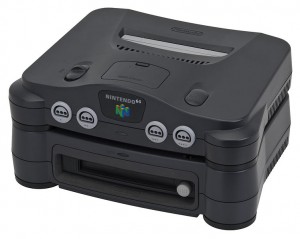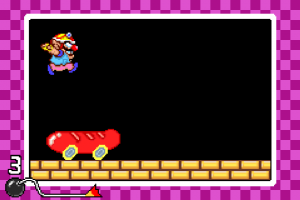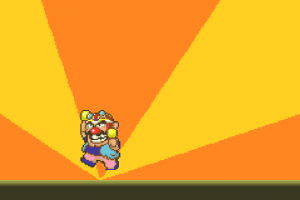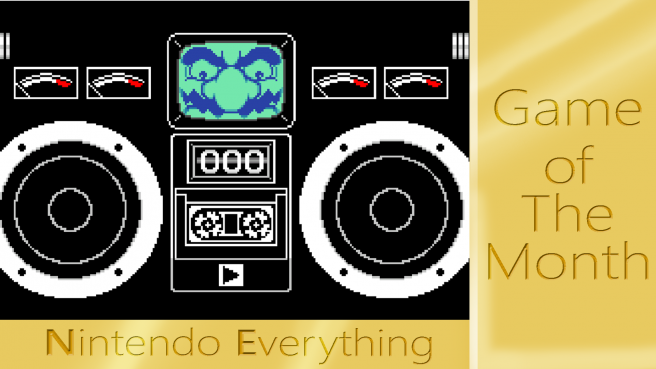[Feature] WarioWare: Origins
When it was released back in 2003, the first WarioWare title was praised by critics for its innovative manner of transforming a series of minigames into an addictive gauntlet of five-second challenges. The surprise Game Boy Advance hit introduced the world to its unique bite-sized forms of gameplay, a variety of visual styles, a new cast of characters and enka music, but some of its more “innovative” aspects actually originated from earlier Nintendo experiments. It makes sense that a weird game would have a weird history behind it, and in WarioWare’s case it comes from one of the weirdest consoles – the Nintendo 64 Disk Drive.

The Nintendo 64DD was an expensive Japan-only add-on to the 64-bit console that was aimed at not necessarily at gamers, but at creators. The theme of creating and sharing work was central to every title in its admittedly-tiny software lineup – from F-Zero X’s expansion kit to Doshin the Giant. The 64DD also boasted online connectivity through Nintendo’s Randnet service to communicate and create custom avatars (features that would eventually end up in the more recent Miiverse), though this resulted in the console requiring a pricy subscription cost that likely led to its commercial failure. However, Randnet’s ability for players to share their work was put to great use by Nintendo’s series of “Mario Artist” games.
This set of four titles went far beyond the simple creation tools of Mario Paint for the Super Nintendo, resulting in a suite of unique applications. Of particular interest in relation to the game I’m supposed to be discussing is the final title in the Mario Artist series – Polygon Studio. This neat tool enabled users to create their own 3D models out of polygons. And more importantly, these 3D models could be used in a set of familiar-looking minigames:
Yes, this “Sound Bomber” mode was the precursor to the WarioWare series as we know it today. Though the selection of “microgames” is quite limited by comparison, the format of aiming for a high score by completing a slew of short, random tasks that gradually increase in intensity is very much intact. Most of the games even make a second appearance in the introductory stage of the original WarioWare, as does the tape recorder skin (now with Wario trapped inside). Though the original games are visually quite simple to fit with the customisable 3D models, WarioWare added its own surreal styling with potato cars and the series’ iconic bomb timer. Presumably the smiley white guy from Polygon Studio would go on to grab a bunch of balloons and jump on a bunch of platforms in Rhythm Heaven.

So how did this throwaway mode end up turning into one of the most beloved games on the GBA? And how did Wario end up getting involved in all of this? Well, development of both Polygon Studio and WarioWare was handled by Nintendo Research & Development 1 and the two games shared many staff members including director Hirofumi Matsuoka. Since the Sound Bomber mode proved to be surprisingly enjoyable, the team took the concept and expanded on it in unexpected ways. By all accounts, WarioWare was initially developed in secret due to its experimental nature being quite at odds with Nintendo’s perceived “house style”. As Goro Abe, the graphic designer who game who would go on to direct most entries in the WarioWare series explains, ‘WarioWare was born out of a desire to depart from the norm, with that particular kind of fun that you only get when you make something different.’
Perhaps this is the reason why WarioWare’s cast consists largely of new characters; an eclectic mix of aliens, rogues and nerdlingers who never struck me as particularly “Nintendo”. The only familiar face is Wario, but his presence works because his character was never really defined. Series producer Yoshio Sakamoto stated that the idea of using Wario was because he’s an idiot who is always doing stupid things, but there really is no other Nintendo character who could be used to market the creative, “anything-goes” style of the game. It’s certainly more out-there than one of Mario’s parties. Then there’s also the link between Wario and Nintendo’s handheld consoles. It wouldn’t be much of a stretch to call the Wario Land games some of the best platformers on the Game Boy, so plenty of players were already familiar with the character – even if he was constantly switching between being a hero and villain. Additionally, the Wario Land games all play fairly differently from each other and tend not to abide to traditional platforming tropes like lifebars and linear levels, so Wario is already characterised as someone whose games differ from the norm.

What I like about WarioWare’s cast is that the only real common link between these taxi drivers and mad scientists is that they’re all game developers. Though thankfully thin on plot, WarioWare is essentially a game about a bunch of indie developers trying to hit it big with their own unique style of games. It really fits with the design philosophy of emphasizing personal creativity that was behind Mario Artist and surely impacted how WarioWare came to be. As Abe explains, each microgame was created by a single person who handled the visuals and programming themselves, so the game itself was the result of individual creativity that deliberately distanced itself from Nintendo’s usual style.
WarioWare would return to its roots with 2009’s WarioWare D.I.Y., a title that allowed players to craft and share their own microgames. Abe had plans to make WarioWare D.I.Y. shortly after the first game was released, but this ambitious title couldn’t really be pulled off until the Nintendo Wi-Fi Connection was up and running. WarioWare D.I.Y. takes more than a couple of cues from Mario Paint and Arist with its accessible approach to creation and it’s nice to see that the most recent title to retain the WarioWare name keeps this connection to R&D1’s series. The future of the franchise isn’t exactly bright; after starring in a series of launch titles it looks like Wario and company are destined to make nothing more than tech demos. But even if WarioWare loses its creative spark, one can only imagine what new and creative styles of games we could see if Nintendo would let its developers express themselves in the same way the WarioWare team did.

